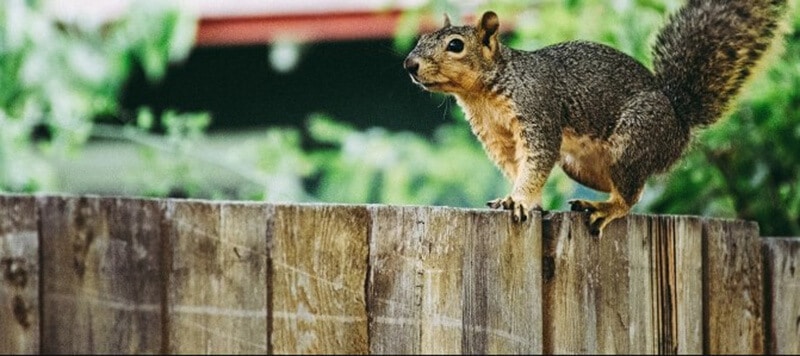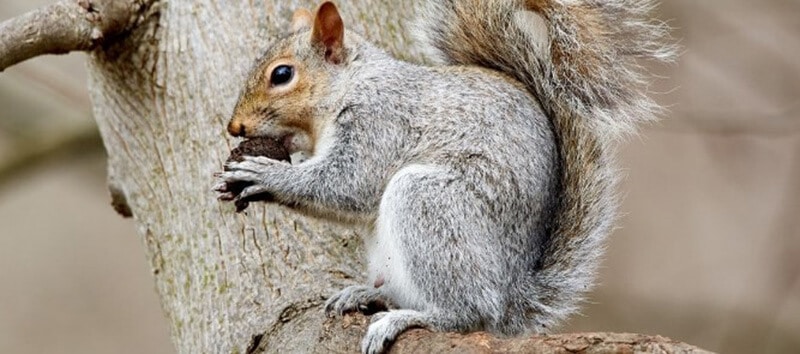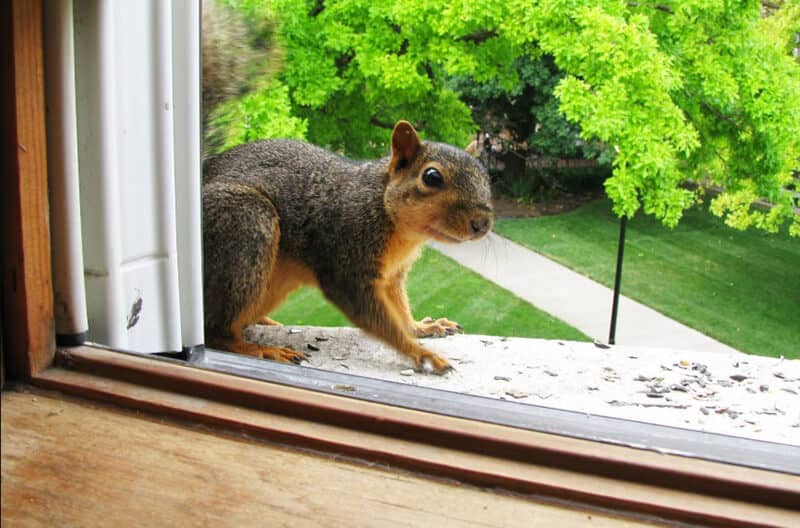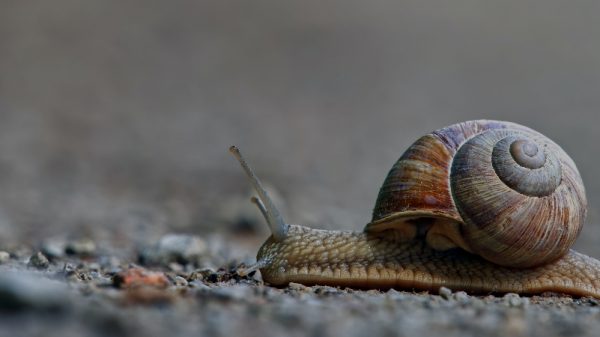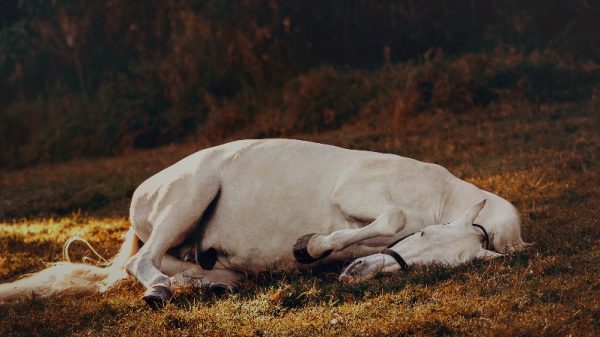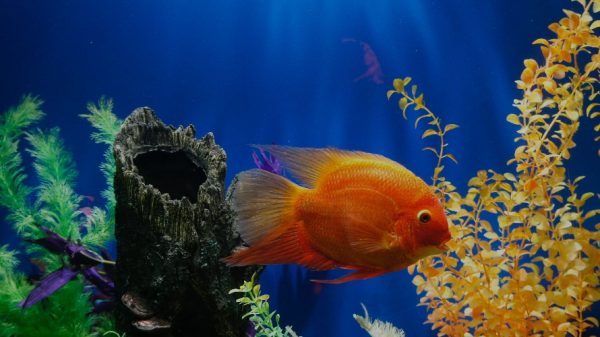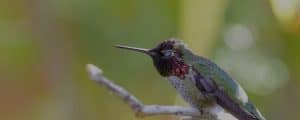Maybe you have seen yourself marveling at the glory of that which we call the inside? It is so comfy there is climate control, soft surfaces, and protection against the elements. If you have ever found yourself thinking about it a bit more and going a bit farther, you may have even begun asking yourself the question,’ What do animals do to shelter?’
Your thoughts might even change to the notion of a squirrel hunched over an acorn on a pleasant, warm moment. However, you only ever find the squirrel on amazing days! Where then does this little monster find refuge from the elements and predators, and in which do squirrels receive their essential shuteye following a long day? Where do squirrels sleep?
Most animals take a safe place they could utilize for shelter, security, and increasing their young, and also unique animals can utilize quite different sorts of shelters. For mothers, their joyful hovels consist of ground holes, dens, or drays. There are principles between these various structures, the forms of squirrels that utilize them, as well as the conditions under which one kind of nest is used within another. Keep reading Olly Sleep will expand your horizon about Squirrels.
Types of Squirrels
It is important to notice, first of all, that distinct kinds of squirrels nest otherwise. The family consists of tree squirrels, ground squirrels, and flying squirrels, but in addition comprises chipmunks, marmots, and prairie dogs. But for the sake of the guide, we will stick with those initial 3 types mentioned since they are typically what the majority of men and women think about when they hear’squirrel’.
Tree squirrels and flying squirrels live largely among trees, whilst ground squirrels typically reside in burrows in the earth or among stones. Even the Eastern gray squirrel of North America, the red squirrel of Eurasia, along with the North American fox squirrel are considered to be the most common and most well-known forms of tree squirrels, also discuss comparable nesting habits throughout the lands.
An Overview of Squirrel Nests
All squirrels nest inside something. When it’s from the ground or in a tree, then the frequent refuge for squirrels to make for themselves and to their young are nesting. The difference between these nests depends on the form of a squirrel, the geographical location, along with the season or surroundings.
For tree squirrels and flying squirrels, the nest consists of dens or drays. A den is produced in the side of a shrub and is usually constructed with leaves and paints for bedding. Dens can be constructed into deserted woodpecker holes or the natural cavities of the tree. Since a den just has to be coated on the part facing outwards, they obviously offer squirrels a better shield and protection against wind and precipitation. For all these reasons most species of tree squirrel choose to utilize dens during the winter months. If there is a lack of organic dens in a specific place, foliage nests (otherwise called drays) become increasingly prevalent.
A dray is a nest that’s constructed from the branches of a shrub and consists of leaves and stalks organized as needed. A dray usually functions as a location for sailors to find refuge during warmer summer months while also offering a secure place to raise infants. But, drays may also be employed by squirrels throughout winter months too. To get a dray to give warmth and shelter during those winter months, squirrels will harden and thicken their drays by adding more layers of leaves, twigs, and moss. Should you ever discover a baby squirrel appear and you will observe the nest.
However, what about ground squirrels? What do their footprints seem? Comparable to a shrub den, ground squirrels use dens too, even though they’re underground thus the title’floor’ squirrels. If these creatures are local to your region, you’ll certainly be knowledgeable about them and will likely easily comprehend the gap between these and their tree-dwelling brethren. Even though a tree squirrel will run directly towards a tree if you attempt to approach this, a ground squirrel is rather likely to sprint because of his underground den in precisely the exact same circumstance.
The underground den of a ground squirrel is produced by digging a pit and generating a burrow or possibly a system of underground tunnels. You could have the ability to catch a glimpse of a ground squirrel hole when there’s a feature small dirt pile near it. And occasionally, where there’s a massive population of ground squirrels, there’ll be a number of holes alongside many tiny piles of dirt.
Function
Gray, fox, and red squirrels sleep within their own nest, which can be called a drey. It’s made up of sticks and twigs then lined with ribbons, ribbons of bark, grass, and leaves. The nest is usually constructed in the branch of a tall tree but may also be constructed at the loft of a home or from the exterior walls of a house. Squirrels will sleep in this nest during the night and through portions of the day when they aren’t out foraging for food. Flying squirrels will construct a nest of bark and blossoms in hollowed out holes in trees. They’ll sleep together throughout winter in these nests to stay warm.
Time Frame
Tree dwelling squirrels like the grey, flying, and fox squirrel sleep and live in their nest only when they’re born. After maybe provided six weeks, then they have the capability to open their eyes and have a look at their environment. At eight months they could eat good food and spend additional time away from the nest. They could crack open the nuts they consume at fourteen days and nearly all of these kinds of squirrels are full-grown at ten months, except for the flying squirrel, which reaches adulthood at 5 months. When they’re fully developed they find somewhere to call home and build their own nest in which to sleep and live.
Geography
Ground squirrels differ from tree squirrels because they sleep and live at a burrow dug into the floor. In northern climates, they’ll sleep throughout winter in a state of hibernation. Their body temperature will fall, and their pulse and breathing slow down. Ground squirrels may sleep this manner inside their burrows for as long as five or six months, waking every couple of days to forage for food before heading back to sleep. Ground squirrels in warm climates may also hibernate, but during the summer months, to escape the intense heat. This happens in desert areas and can be called estivation.
Expert Insight
Red squirrels reside in conifer and hardwood forests and assemble nest normally at a fir tree. They sleep in such nests but they don’t hibernate from the cold northern winters. Rather they hunt for food during the daytime hours. It is possible to tell in which a red squirrel lives and sleeps by searching for the chewed up stays of pine cones, which are a favorite food of those species. They’ll collect in great numbers under the shrub that the red squirrel is residing in, together with the parts of the pine cone it has torn off in search of their seeds.
Where Can Squirrels Live Night?
Despite their playful, playful seeming behavior, many sailors’ time is really spent sleeping. A squirrel spends around 60 percent of its own day asleep, meaning an ordinary squirrel sleeps for nearly 15 hours every day.
Nice if you’re able to get that, right?
Evidently, this differs based on the kind of squirrel, however, so it is well worth taking a little time to break the variety of squirrel species which you may encounter in your lawn or hiding out from your property.
Squirrels are located on every continent on Earth, besides Antarctica and Australia, and there are more than 200 species. But, all of them can be categorized into three main Kinds of squirrels:
- Flying squirrels
- Ground squirrels
- Tree squirrels
Flying Squirrels
Despite their title, flying squirrels don’t really fly. Not precisely.
However, it can at times look like it as a result of weblike skin flaps in their own sides. These flaps allow these creatures to glide from 1 tree to another, providing the appearance of flight.
Flying squirrels reside in tree dens. They construct these houses in summer with bark, grass, leaves, small twigs, and moss. From time to time, you might encounter dens in treehouses or house attics, and it is not unusual to find a flying squirrel sleeping in a tree branch or some hollowed-out hole in a tree.
Tree Squirrels
Gray, Red, and fox squirrels are the most frequent kinds of tree squirrels. Red squirrels are mostly located in Europe, while Gray and Fox’s squirrels are located here in America.
Gray squirrels have large eyes. Red squirrels have a coat composed of reddish-brown fur. Yet, squirrels can change their color when they discard this jacket throughout the summer. Thus, a gray squirrel might have coats that seem grey, white, brown, or black.
Tree squirrels sleep in dreys. A drey consists of twigs, branches, leaves, and mosses. The squirrels strategically place the drey involving tree branch forks. Dreys are occasionally located in attics or across the walls of a home.
Ground Squirrels
Most of a ground squirrel’s time is spent you guessed it on the floor. These animals operate in ground-level burrows. In the northern countries, where winters are freezing, ground squirrels hibernate throughout the winter. On the opposite end of the spectrum, ground squirrels that live in deserts and other hot climates estivate (basically hot-weather hibernating) during summer once the temperatures are hottest.
During estivation, a squirrel spends all its time sleeping in a subterranean burrow that protects it from the hot sun above earth. Squirrels may estivate for as many as seven months.
What Time Can Squirrels Go To Sleep?
So, how are squirrels becoming that amazing sounding nearly 15 hours of sleep every day?
They are crepuscular, so they are just active at dusk and sunrise. At least, that is true for the majority of these creatures. Some species, notably tree squirrels, adore sunlight and might stay from the nests all day during the summer.
When they are not running around searching for and hoarding food or mating squirrels are going to be inside their own nests sleeping or resting. As the majority of the creatures that prey squirrels here in the greater Austin region are nocturnal, it is possible to bet they attempt to prevent predators by remaining in their nests during the night.
Where Can Squirrels Sleep When It Rains?
Squirrels are little animals. They have a little body to surface area ratio, making them lose their body heat more quickly than creatures. Because of this, it’s critical that their bodies do not get soaked by rain since whenever they do, the water makes it harder for the small mammals to restrain their body temperature.
Just how do we keep from becoming soaked out of our rare, but frequently hefty, rainstorms here in Austin?
They have got a few tricks. To begin with, they utilize their tails to protect themselves in the rain. They reverse the tail above their entire body, using it as an umbrella of types. Although the tail can get bloated, the remaining part of the human body remains relatively sterile. But this works great as security against mild rain.
Squirrels escape heavy downpours by concealing in their nests. The nests are often constructed and strategically positioned in this manner that they provide maximum protection from cold and rain. This manner, a squirrel can endure heavy downpours and thunderstorms.
Where Do Squirrels Sleep In Winter?
When most homeowners need a simple reply to this issue, the simple truth is it is dependent upon the squirrel. An exact answer gets even more complex when we consider that we rarely get chilly weather here in Central Texas, therefore squirrels frequently have similar sleeping habits all through the year.
Ground squirrels hibernate during winter months. Flying and tree squirrels, on the flip side, don’t hibernate. Squirrels that don’t hibernate usually reinforce their nests, thus providing better protection and insulation against the winter season. Flying squirrels also consider security in numbers and might reside together in teams of 10 or more during colder months.
When ground squirrels hibernate they move in their burrows and sleep. They conserve energy by radically lowering their body’s metabolic processes and moving to a state of sleep. Ground squirrels that are in hibernation can sleep as long as five months. The sleep isn’t complete, however. Throughout each week of hibernation, they may actually be alert for between 12 and 20 hours.
When Can Squirrels Move in Your Property?
Like many wild animals, squirrels might be drawn to your home because of the fact it is protected from harsh exterior conditions such as extreme temperatures, predators, and adverse weather.
So, there is the very first part of your response. They move in if the conditions inside look better when they do outdoors. What exactly does that mean? Squirrels could be drawn to your house under a few problems.
Hot weather
If your options entailed temperatures of over 100 levels or comfy air conditioning, then what would you select? Possibly the exact same option for a squirrel.
Cold weather
Though we do not endure the intense cold of several northern countries, Austin can still get fairly chilly out, and also we get frosts as well as snow every once in a while. While this occurs, your home probably looks pretty attractive.
Storm
Why risk getting blown from your shrub flooded when you can just set up shop within the pleasant, comfy house with loads of nooks and crannies.
When Predators Are Nearby
Hawks. Owls. Weasels. Foxes. If your household was on the run out of one or more one of these barbarous creatures, you would want security and protection, too. That is what your home represents.
How do squirrels enter your property, then?
These rodents squeeze their way in through small holes and openings on the walls, walls, doors, roof or floors. A number of the more competitive squirrels might even think their way in. Once within the home, the bark sets up nests in hidden places like the attic, chimney, ceiling, and inside the walls.
Dangers Of Getting Squirrels Inside Your House
We briefly touched on the above, but squirrels who get to a house are a menace not only to the house itself but also to people residing in that house. Squirrels can harm your house, spread disease, and put your family in danger.
Increased Risk Of Fires And Electrocution
There have been many reports of squirrels gnawing at electricity wires. As soon as they chew through a live power cable, then they can get electrocuted. Throughout the electrocution, the bark may capture fire and, in the process, place your house ablaze.
Besides resulting in a house fire, they might also result in power outages in your property. The squirrel’s gnawing can also render electricity cables exposed, which divides the house and you into the probability of accidental electrocution.
Bites, Scratches Or Other Injuries
Obviously, squirrels are timid critters that would not normally attack people physically. But, there are instances where big squirrels attack little kids. Some of those attacks may be quite so barbarous that they cause severe harm to your child. Squirrels may also bite or scrape a beloved household pet.
Property Damage
Front teeth of squirrels are so powerful the bark can quickly chew through the fascia and siding of a home. These pests may also gnaw through the roofing shingles, harm the HVAC system, block ports, and gutters and also eat off portions of door frames and window sills.
This harm may bring down your house worth, and making repairs is neither simple nor cheap.
As irritating, squirrels frequently die in difficult to reach places. With time, dead squirrels start to decay, which isn’t just unsanitary but also generates an offensive odor that permeates to your residence.
Vehicle damage
It is not only your home and nearest and dearest in risks. Squirrels are known to enter automobile engines.
These animals have a tendency to conceal in automobiles which are not used regularly. Once indoors, they could build a nest from the engine. It is also in a gardener’s character to gnaw off at cables and several other automobile parts, and the consequent harm is often expensive to repair.
Other health risks
Squirrels and their stool carry disease-causing elements like salmonella and lep to Spiros is causing bacteria. Furthermore, squirrel borne disease meds might cause such disorders as fever, headaches, stomach pains, nausea, enteric fever, gastroenteritis, food poisoning, and much more.
Signs Your House Has Squirrels
Squirrels are rather large rodents. For that reason, it’s generally easy to tell when you’ve got an uninvited guest in the kind of a squirrel in your house. Experts recommend that you lookout for the next indications of squirrels on your own home:
Scampering, scratching or leaping sounds from the attic, walls or chimney
Damaged entrance points such as groove planks, panels across the roof and/or shingle damage
Interior harm, which might include things like chewing on furniture, shredded ductwork, foul smells from the loft, and chewing on electrical wires.
Visual identification of squirrels found coming from or outside of your Property
A lot of men and women underestimate the destructive capabilities of this squirrel. All it takes is a small gnaw and a tiny nibble from a lot of persistent squirrels to create several substantial headaches in your property.
Prevent Wildlife From Transferring In
Squirrels are often very persistent should they opt to take up home. That is why lots of Austin homeowners predict at Chemfree to humanely deal with these uninvited guests. Our specialists apply their understanding of animal behavior to identify the way a bark or another sort of creature is finding its way indoors and allow you to take preventative steps to stop them from returning. With Chemfree’s aid, you won’t need to be concerned about where rodents are sleeping and you will rest assured knowing it is in a natural habitat. Contact us now for a quote!

